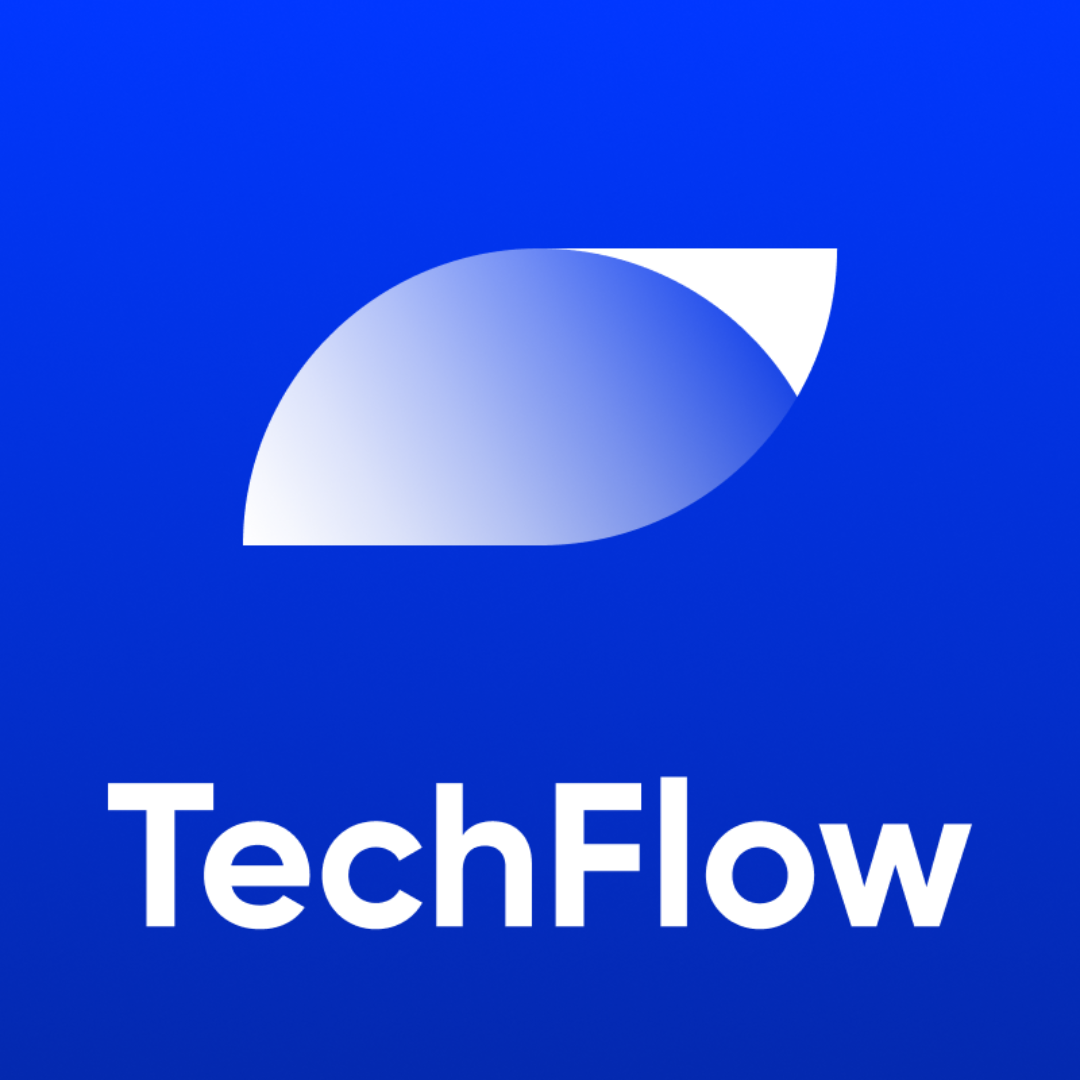Tether's Hidden Game: 20 Companies Unveiling the Blueprint for a Digital Financial Empire
Original author: 100y.eth
Original article translated by: Deep Tide TechFlow
Key points
- The order of an empire is inextricably linked to the status of its currency, and the continued growth of USDT foreshadows the rise of a vast digital financial empire.
- This article reviews 20 companies that Tether has recently invested in and analyzes their strategies for building a digital financial empire.
- Tether consistently follows these strategies: 1) building trust through Bitcoin and gold, 2) strategic expansion globally, and 3) enhancing retail and institutional accessibility through services and products.
1. Tether and the Digital Financial Empire
1.1 Currency and Empire
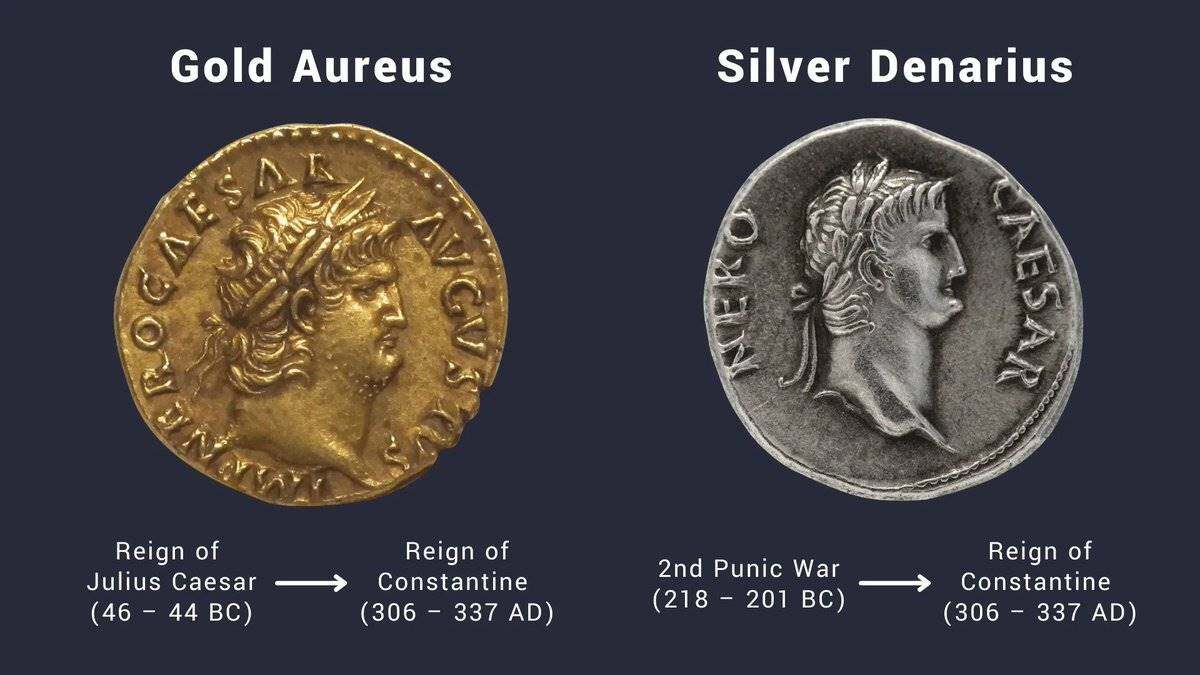
Source: Dyken Wealth Strategies
Money is a widely accepted medium of exchange and unit of value in daily life. However, from an imperial perspective, the role of money extends far beyond simple transactions; it can be understood as a tool of power, encompassing political, cultural, and social functions. Throughout imperial history, money has played the following additional roles:
- Symbols of Imperial Order : The figures or imperial emblems on coins visually represent the authority of the empire, serving as symbols to demonstrate the imperial order to the user.
- Instruments of Imperial Control : Imperial order was strengthened by centralizing the power of minting and issuing currency in the imperial center, while external regions relied on the central empire's monetary system.
- Standardized tools for resource aggregation : Empires accumulate regional resources through taxes and tributes, while currency serves as a key medium, enabling the standardization and transportation of these resources.
Without exception, the status of currency is always closely linked to the status of empire. When an empire develops and reaches its peak, its currency becomes strong and sustains the empire's prosperity; conversely, when an empire declines, the status of its currency also declines, accelerating the empire's collapse.
Today, words like "empire" or "colony" have seemingly disappeared, but we haven't shaken off these concepts. The United States, with its powerful economy and military, plays the role of a modern empire, and the dollar has become the global currency.
Many countries have attempted to challenge the dollar's dominance in modern society, but all have failed. The dollar firmly holds its position, accounting for approximately 57% of global foreign exchange reserves and about 50% of SWIFT international settlements.
The Unstoppable Growth of 1.2 USDT
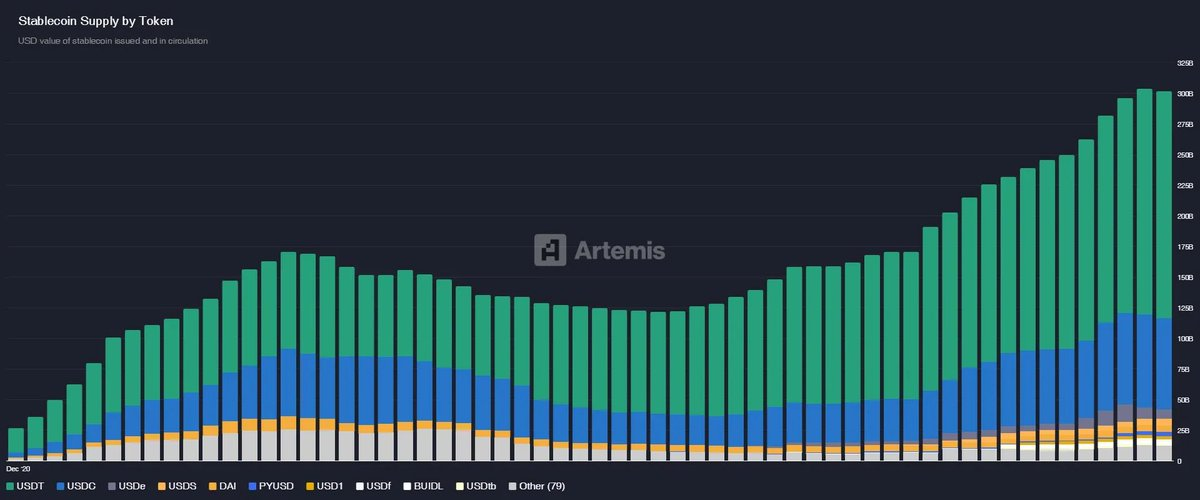
Source: Artemis
With the continuous advancement of information technology (IT), the global economy has gradually migrated to the internet. The emergence of blockchain technology has made it possible to use currency securely online, leading to the rapid development of the on-chain economy. As the currency used in the on-chain economy, stablecoins have also rapidly expanded to approximately $300 billion.
Among the many stablecoins, Tether's USDT is the most noteworthy. USDT allows people in many countries where fiat currencies are extremely unstable to easily access the US dollar, the "imperial currency." Even without a credit history or bank account, anyone with an internet-connected mobile device can easily access the US dollar. This has opened the door to the rapid growth of USDT, especially in developing countries and third-world countries.
More notably, despite the enactment of the GENIUS Act and the gradual integration of blockchain into the regulatory mainstream, USDT's market share has not declined significantly. USDT's market share remains above 60%, more than double that of USDC, which ranks second.
1.3 Towards a Vast Digital Financial Empire
Tether is building its own vast empire, and the core driving force of this empire is the strong currency USDT. However, building an empire is never an easy task.
Although USDT is pegged to the US dollar, its reserves include not only highly liquid cash equivalents such as cash, US Treasury bonds, and repurchase agreements, but also relatively less stable assets such as precious metals, Bitcoin, non-US government bonds, and corporate bonds. In major countries that have established stablecoin regulatory frameworks, these types of assets are generally not legally recognized as reserve assets.
In fact, according to the EU's MiCA (Crypto Asset Markets Regulatory Framework) regulations, USDT failed to meet some of the conditions for stablecoins under the EMT (Electronic Money Token) category. As a result, exchanges operating in Europe delisted USDT, effectively excluding it from the EU market.
However, Tether has not backed down. As a company, Tether acquires equity by investing in various startups and companies, and sometimes donates to non-profit organizations. By examining these actions, we can infer the direction Tether has chosen and how it is striving to build a vast digital financial empire. Let's now look at Tether's investment cases to understand how it has overcome the challenges of building this empire.
2. What types of companies has Tether invested in?
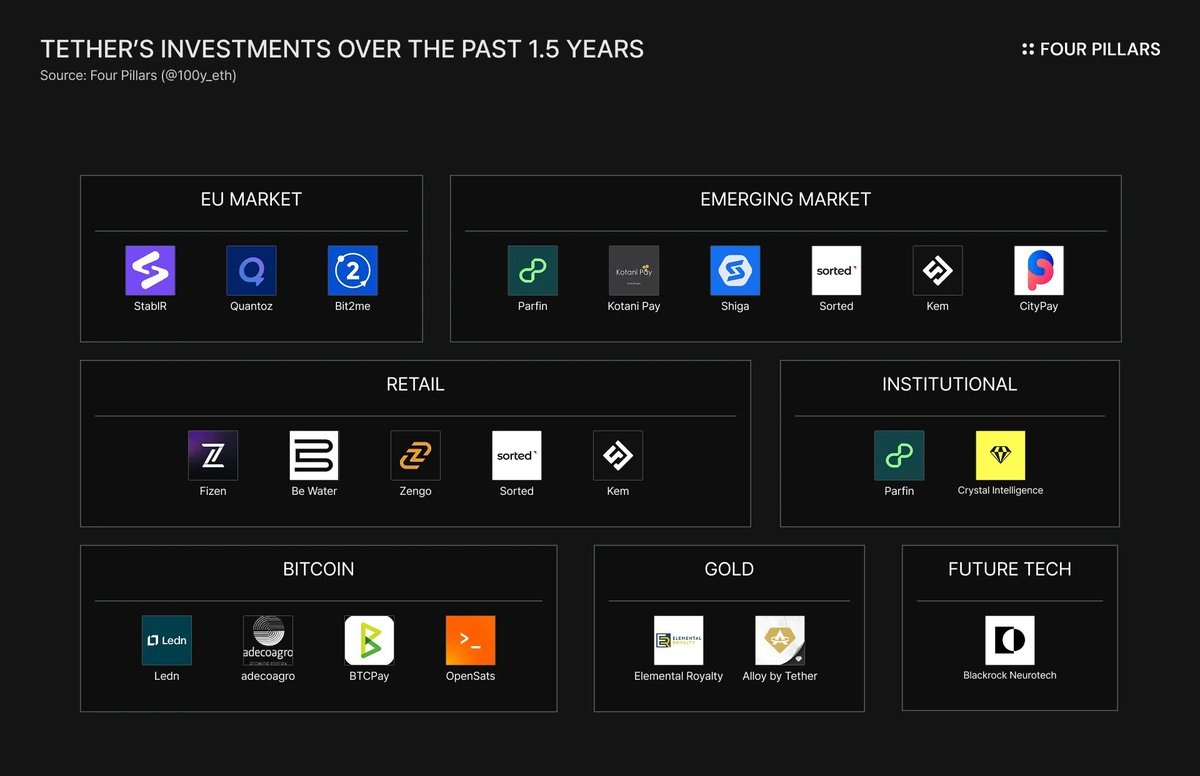
2.1 Before we begin
Tether is a company that receives considerable attention from the crypto community. This attention is understandable, as Tether is the issuer of USDT, the world's largest stablecoin, and is also known as the company with the highest per capita income in the world.
However, the crypto community doesn't seem to show the same interest in Tether's startup and corporate investments. More precisely, the focus is on token issuance protocols backed by Tether. Representative examples include chains specifically built for USDT, such as Stable and Plasma. However, these two projects are not directly funded by Tether, but rather by related entities such as Bitfinex, USDT0, and Tether's CEO, Paolo Ardoino.
Tether is very active in corporate investments, but most of its portfolio companies do not issue tokens or have significant regional characteristics, thus these investments have failed to garner widespread attention within the crypto community. Nevertheless, examining Tether's investment portfolio can still reveal clues about its future direction.
2.2 What types of companies has Tether invested in?
Tether announces its investment activities through its official website's news release platform. After analyzing approximately one and a half years of investment announcements, I have summarized the following key themes:
- European Markets : Although USDT has been effectively excluded from the EU market, Tether is still seeking opportunities to enter the European market by investing in European issuers and platforms.
- Emerging Markets : USDT's Product-Market Fit (PMF) in emerging markets has been validated. Tether is strategically expanding its influence in these regions.
- Retail users : Tether has invested in multiple non-custodial wallet developers to ensure that retail users can easily use USDT.
- Institutional users : In addition to retail users and emerging markets, Tether has also invested in enterprise-oriented solutions providers to help institutions access USDT more easily.
- Bitcoin : Tether has been investing in BTC and the broader Bitcoin ecosystem.
- Gold : Tether views gold as an important geopolitical asset, just like BTC, and is accelerating its dual-axis strategy centered on Bitcoin and gold.
- Future technologies : Tether not only invests in currency-related businesses, but also ventures into advanced technology fields that can drive the development of human society.
These investment themes reflect the clear strategic direction of Tether's efforts to build a digital financial empire.
2.3 Indirect Strategies for Entering the European Market
StablR @StablREuro
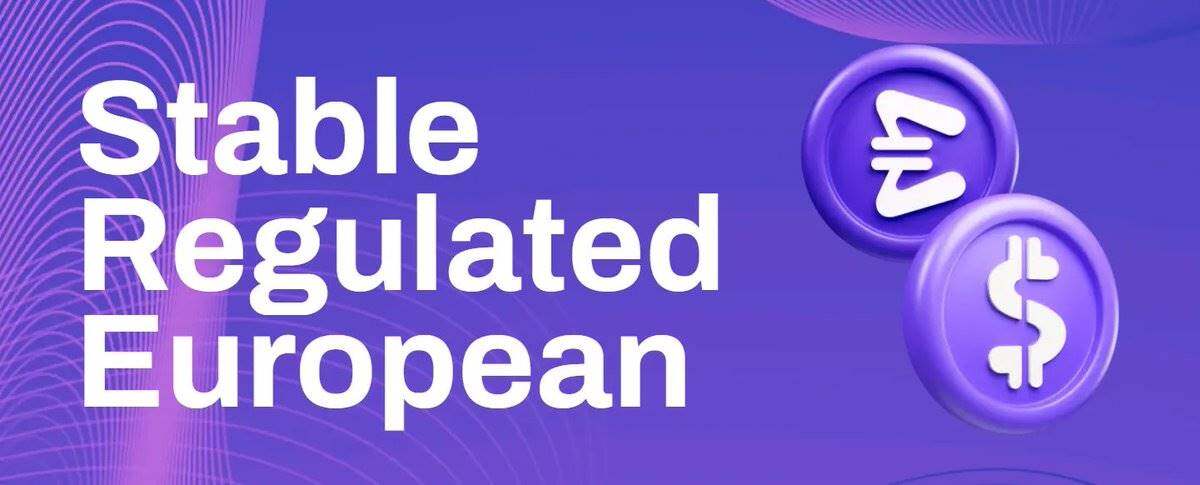
Source: StablR
StablR is a Malta-based stablecoin issuer compliant with the European Crypto Asset Markets Regulation (MiCA), issuing the Euro-pegged Euro (EURR) and the US Dollar-pegged USDR. In addition to securing investment, StablR plans to utilize Tether's tokenization platform, Hadron.
Hadron is a SaaS platform designed to easily tokenize a variety of assets, including stocks, bonds, commodities, and stablecoins, and is powerfully equipped to support full token lifecycle management, KYC (Know Your Customer), AML (Anti-Money Laundering), monitoring, and other compliance infrastructure.
- Quantoz @Quantoz

Source: Quantoz
Quantoz is a MiCA-compliant stablecoin issuer offering EURQ and EURD pegged to the euro, and USDQ pegged to the US dollar.
Of these, EURD is specifically designed for closed-loop systems, and compared to EURQ, EURD can be understood as a general-purpose stablecoin. Quantoz also plans to use Tether's Hadron tokenization platform.
Bit2Me @bit2me
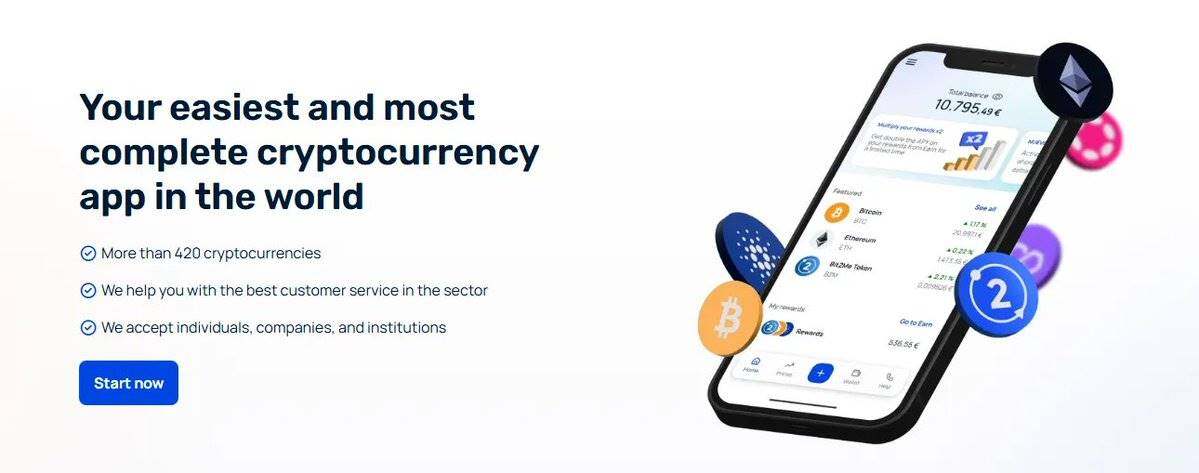
Source: Bit2Me
Bit2Me is the largest digital asset platform in the Spanish-speaking world. Individuals, businesses, and institutions can trade and invest in a wide range of cryptocurrencies on the platform and participate in various financial activities such as remittances, payments, and loans.
Founded in 2014, Bit2Me has been operating for over a decade and boasts more than 1.2 million users, making it a significant platform. Of particular note is Bit2Me's compliance with the MiCA framework and its CASP (Crypto Asset Service Provider) license, which makes it a highly strategic investment target for Tether.
2.4 Investment Strategy Targeting Emerging Markets
Parfin @parfin_io
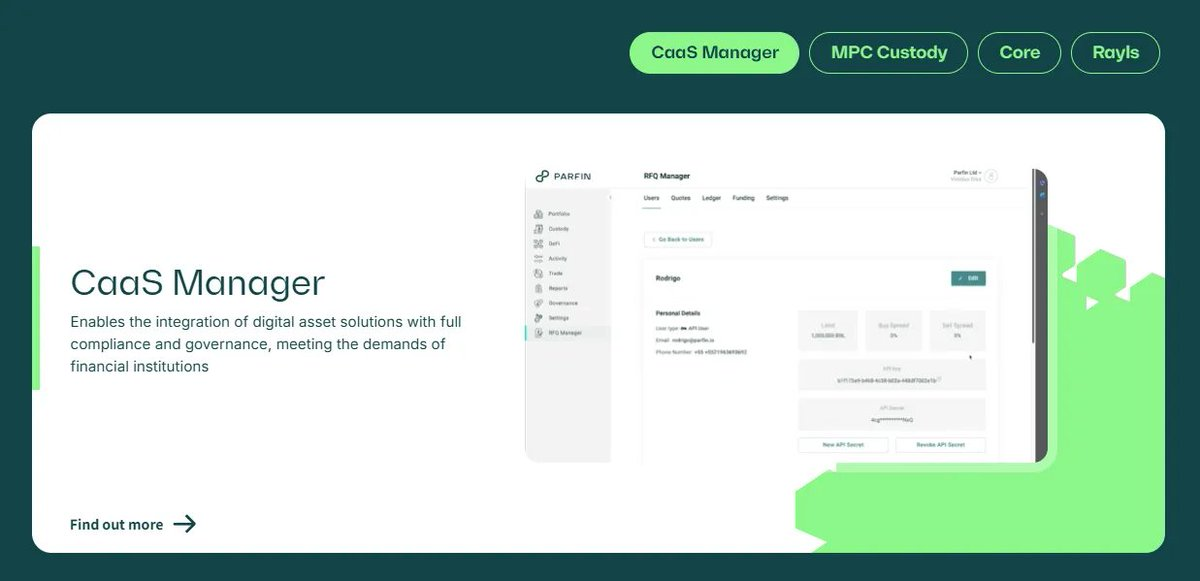
Source: Parfin
Parfin is an institutional blockchain infrastructure company headquartered in Latin America. Parfin provides management and workflow platforms that enable financial institutions to easily adopt blockchain technology and cryptocurrencies, while also offering secure MPC (Multi-Party Computation) wallet solutions and asset tokenization services.
Parfin has also received investment from leading global venture capital firms such as Framework, Valor, Accenture, and ParaFi. Through its investment in Parfin, Tether aims to help financial institutions in Latin America more easily use USDT.
Kotani Pay @kotanipay
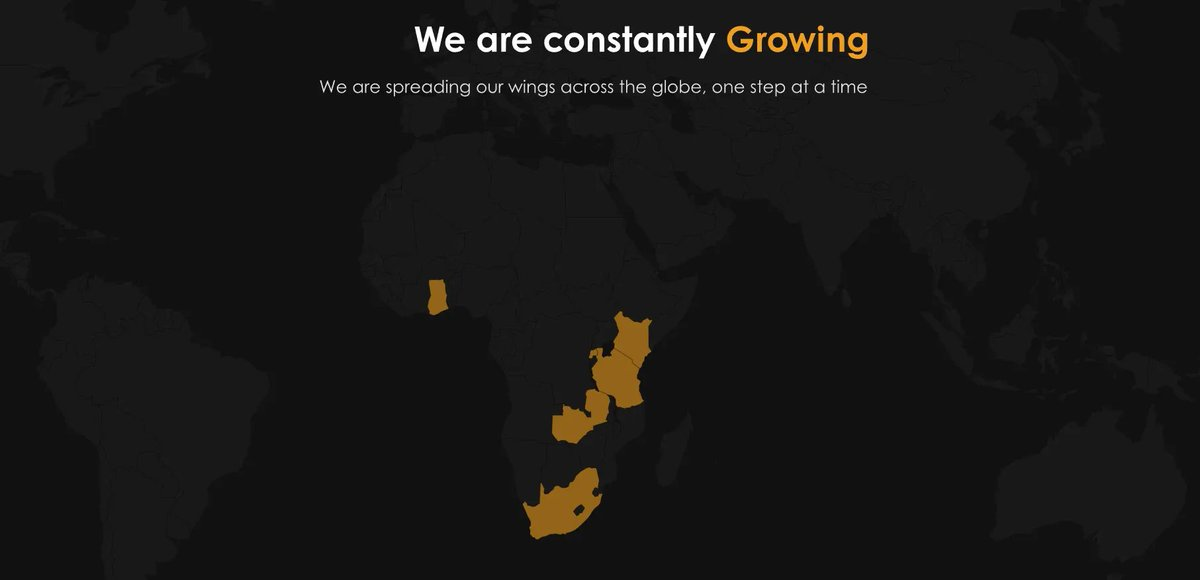
Source: Kotani Pay
Kotani Pay is an African-based Web3 payment infrastructure company that provides services including cryptocurrency entry and exit services, stablecoin settlement and payments, and SMS-based blockchain wallets.
By investing in Kotani Pay, Tether plans to expand its inbound and outbound infrastructure to make USDT more accessible to people in Africa.
Shiga @ShigaDigital
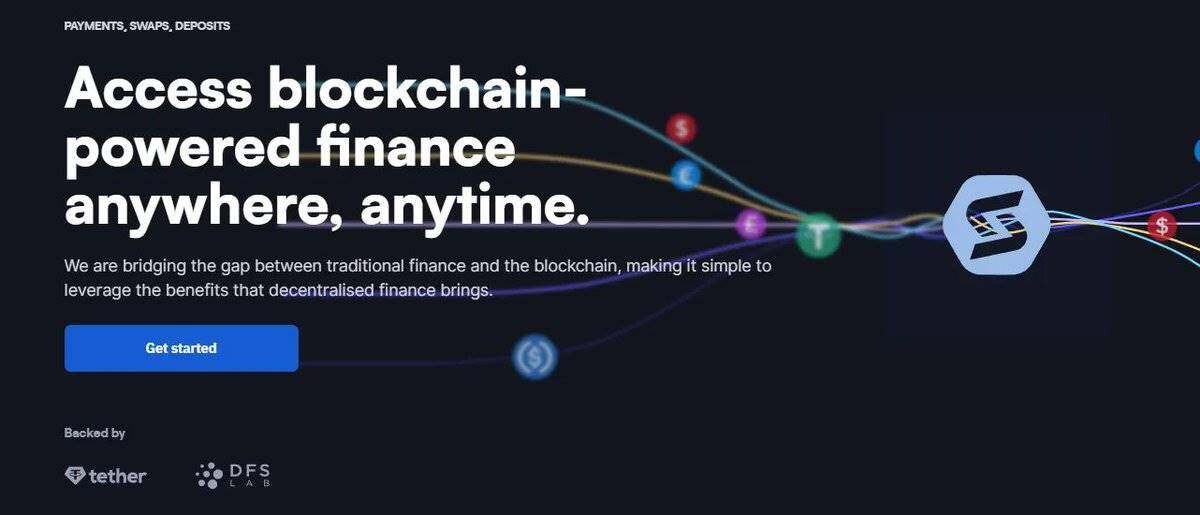
Source:Shiga
Shiga is an Africa-based blockchain financial solutions company that offers a variety of blockchain services, including gateway and exit services between local currencies and stablecoins, over-the-counter (OTC) trading, corporate virtual accounts, corporate treasury management, and blockchain solutions development.
These services enable individuals and businesses in Africa to easily access the US dollar economy through on-chain finance. Tether states that it considers Africa a key region for USDT adoption and is actively expanding its business in Africa through its investment in Shiga.
Sorted @sortedwallet
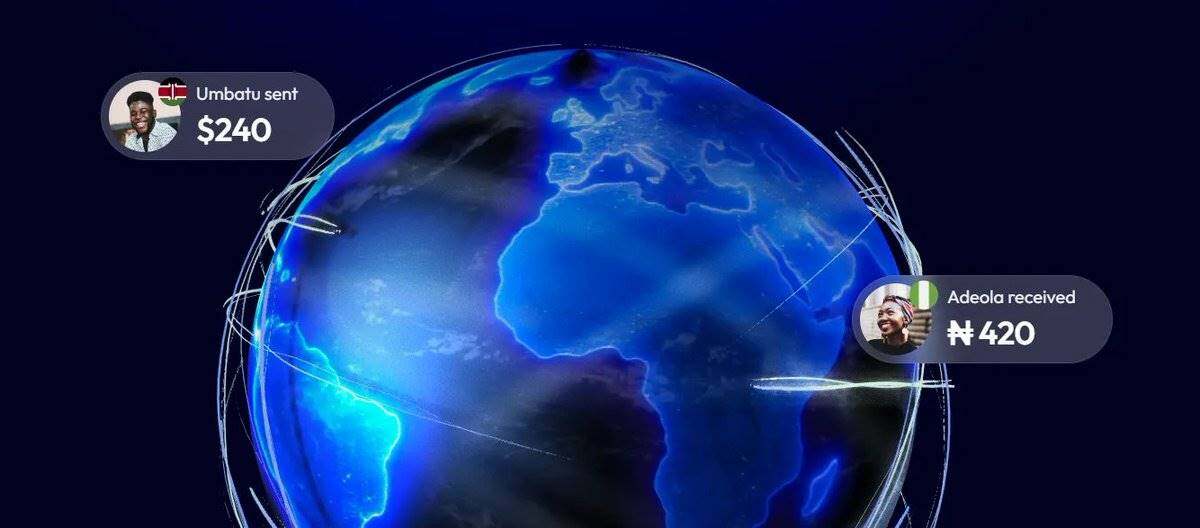
Source: Sorted
Sorted is a wallet solutions company headquartered in Africa and South Asia, providing non-custodial wallets that run smoothly on basic feature phones and low-end smartphones. This significantly improves financial accessibility for the poor and those without accounts.
Sorted users can easily complete encrypted remittances, payments, and inbound and outbound services. By investing in Sorted, Tether can not only expand its influence in Africa but also penetrate the South Asian market.
Kem @kem_app
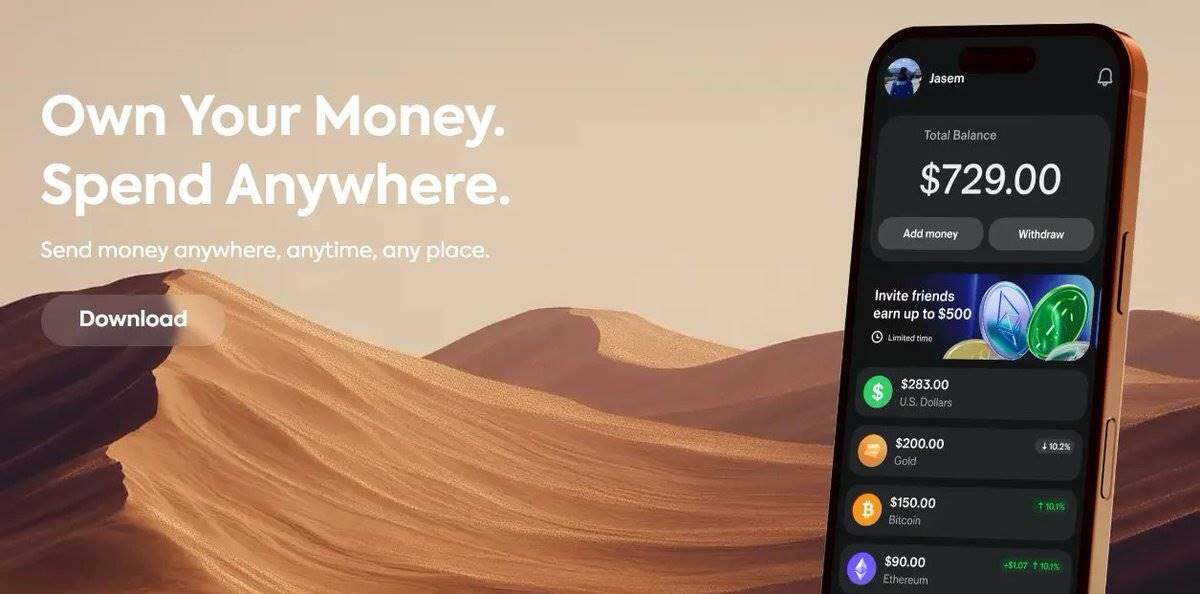
Source: Kem
Kem is a widely used crypto remittance, payment, and financial management application in the Middle East. Users can use the Kem app to send and receive money using crypto assets, link them to physical cards, and even invest in assets such as gold.
Similar to Africa and Latin America, the Middle East has a large number of expatriate workers, so cryptocurrency remittances based on USDT can greatly stabilize their lives. Tether plans to expand USDT's market share in the Middle East, building on its investment in Kem.
CityPay @citypayio
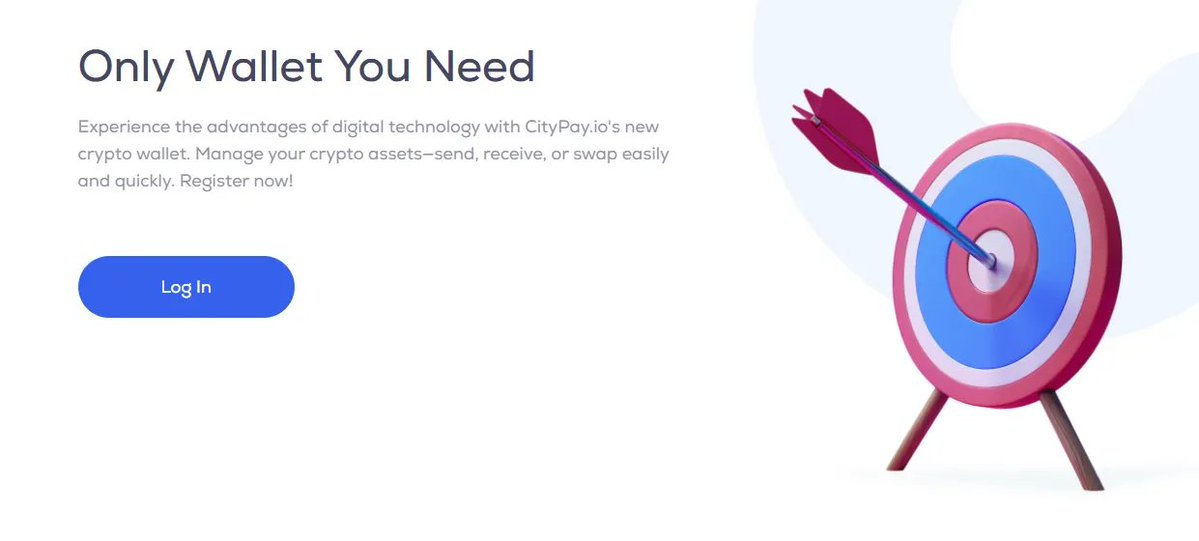
Source: CityPay
CityPay is a Georgia-based crypto payments company. In addition to Georgia, the company is actively expanding its operations into Eastern Europe, including Armenia, Azerbaijan, Kazakhstan, and Uzbekistan, offering wallet services, launching payment cards, and attracting crypto payment merchants.
By investing in CityPay, Tether aims to strategically solidify USDT's market share in Eastern Europe's payments market.
2.5 Retail Strategy
It is worth noting that Sorted and Kem, mentioned above, are also non-custodial wallet solutions companies and can be included in retail strategic plans.
Fizen @fizenapp
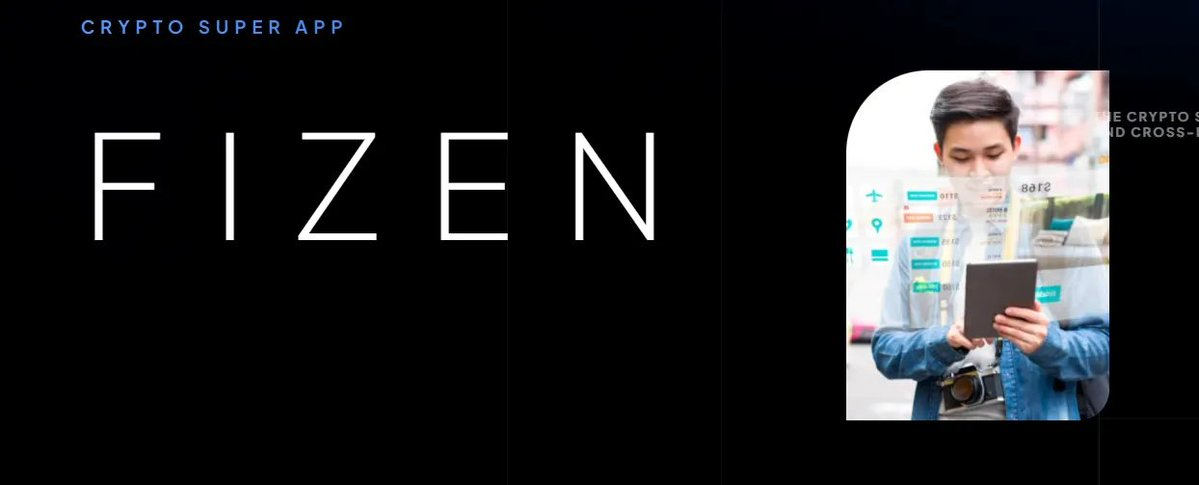
Source: Fizen
Fizen is a consumer-facing crypto super app. Users can store, transfer, and pay with cryptocurrency through a self-custodied wallet. Fizen offers features such as payments, shopping, and gift cards, making it easy for users to integrate cryptocurrency into their daily lives.
By investing in Fizen, Tether hopes to provide users with a high-quality USDT experience and make USDT widely used in everyday payments.
Be Water

Source: Be Water
Be Water is an Italian-based media and content company that produces and distributes films, television shows, and documentaries, as well as operates news brands.
Tether acquired a 30.4% stake in Be Water with a €10 million investment, laying the foundation for its expansion from the financial sector into a global content ecosystem.
Zengo @ZenGo
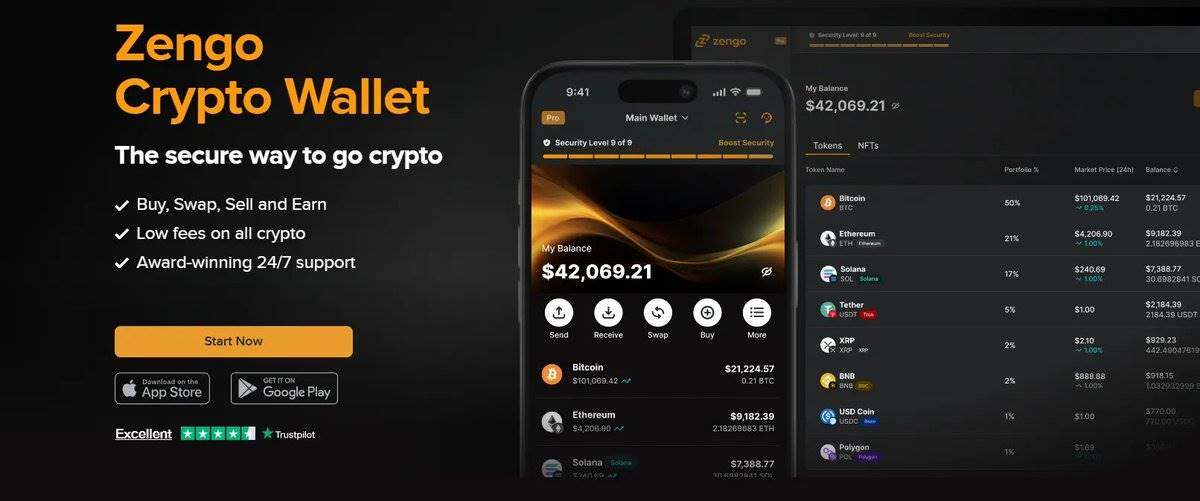
Source: Zengo
Zengo is a wallet solution based on MPC (Multi-Party Computation) technology, allowing users to securely use self-custodied wallets without managing complex mnemonic phrases. By investing in Zeno, Tether helps users more securely store, send, and use Tether-based assets for payments.
2.6 Institutional Strategy
It is worth noting that Parfin is also a company that serves financial institutions in Latin America, and therefore it was included in the institution's strategic layout.
Crystal Intelligence @CrystalPlatform
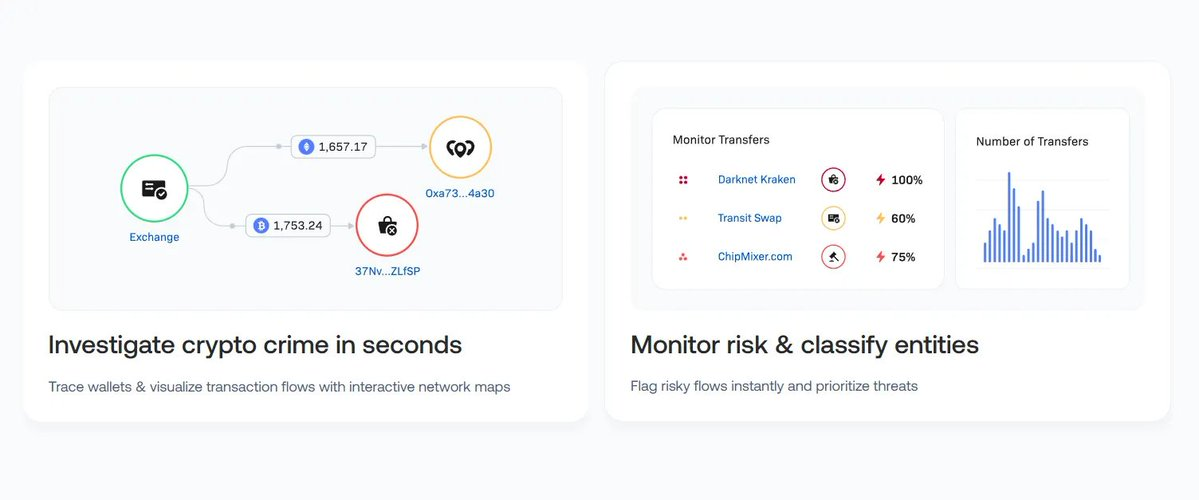
Source: Crystal Intelligence
Crystal Intelligence is a blockchain intelligence company that provides services such as fraud detection, risk monitoring, real-time wallet address analysis, compliance support, illicit fund tracking, and crime response.
By investing in Crystal Intelligence, Tether plans to strengthen its partnership with the company and enhance its ability to prevent the illicit use of USDT. This is a significant strategic investment for USDT as an institution-friendly stablecoin.
2.7 Bitcoin Industry Investment
Ledn @hodlwithLedn

Source: Ledn
Ledn is a Bitcoin-backed lending platform that allows individuals and businesses to borrow stablecoins using BTC as collateral without selling their own Bitcoin.
Tether has been committed to building the infrastructure that connects crypto assets with real-world financial applications, while Ledn is pioneering new financial markets based on Bitcoin, hence Tether's investment in Ledn.
adecoagro @adecoagro_

Source: adecoogro
Adecoagro is the largest sustainable agriculture and renewable energy company in South America and is listed on the New York Stock Exchange (NYSE). Adecoagro sells some of its electricity generation on the spot market, but its revenue may be unstable due to significant price fluctuations.
From this perspective, Bitcoin mining can be seen as a demand for fixed-source electricity. Tether plans to acquire up to 70% of adeccoagro and jointly advance Bitcoin mining projects.
BTCPay Server Foundation @BtcpayServer

Source: BTCPay
BTCPay is an open-source Bitcoin and stablecoin payment processor. Its unique feature is its self-hosted model, allowing users to run it directly on their own servers.
Tether has supported BTCPay for two consecutive years to strengthen the infrastructure for uncensored payments of Bitcoin and USDT.
OpenSats @OpenSats

Source: OpenSats
OpenSats is a U.S. 501(c)(3) philanthropic organization dedicated to funding Bitcoin and censorship-resistant technologies. OpenSats supports the Bitcoin open-source ecosystem through sustainable models, with its donations used for Bitcoin protocol development, privacy tool development, research, and education.
Although this is not an investment, Tether has been donating to OpenSats, demonstrating its continued support for Bitcoin and the open-source ecosystem.
2.8 Gold as a Geopolitical Asset
Elemental Altus Royalties @Elemental_Royal
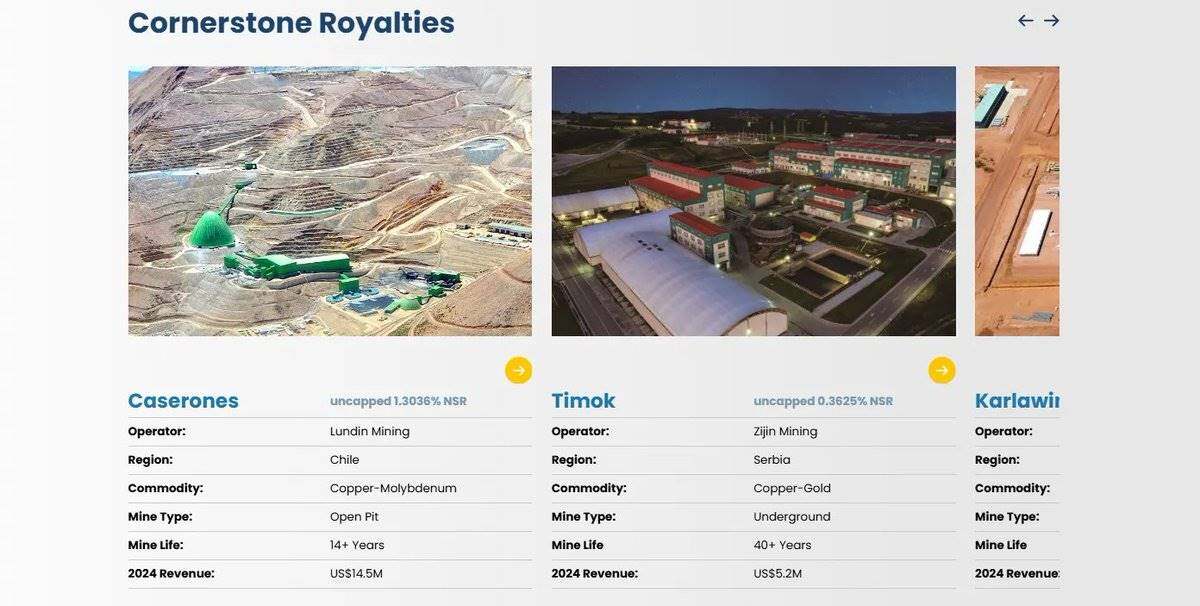
Source: Elemental Royalties
Elemental Altus Royalties is a company associated with gold mining, but it does not engage in mining activities directly. Instead, it generates revenue through concession agreements with gold mining companies.
Tether views gold and Bitcoin as the infrastructure of digital currencies. To strengthen its gold-related strategy, Tether acquired a 31.9% stake in Elemental Altus Royalties.
Alloy @Alloy_tether

Source: Alloy
Alloy is a service launched directly by Tether, not an investment company, but it is included here because of its key role in Tether's gold-related strategy.
Tether offers a gold token service called XAUT, while Alloy has launched aUSDT, a gold-backed stablecoin collateralized by XAUT. This is an attempt by Tether to reshape the historical gold standard and further strengthen its gold and Bitcoin strategy.
2.9 Investment in future technologies
Blackrock Neurotech @BlackrockNeuro_

Source: Blackrock Neurotech
Blackrock Neurotech is a leading company in the field of brain-computer interfaces, founded by a research team at the University of Utah. The company's technology can convert thoughts into digital signals through implanted electrodes in the brain.
For people with mobility difficulties, sensory impairments, or communication barriers, Blackrock Neurotech's technology can significantly improve their quality of life. This investment, making Tether a major shareholder, demonstrates its ambitions extend beyond the financial sector to the exploration of advanced technologies for the future of humanity.
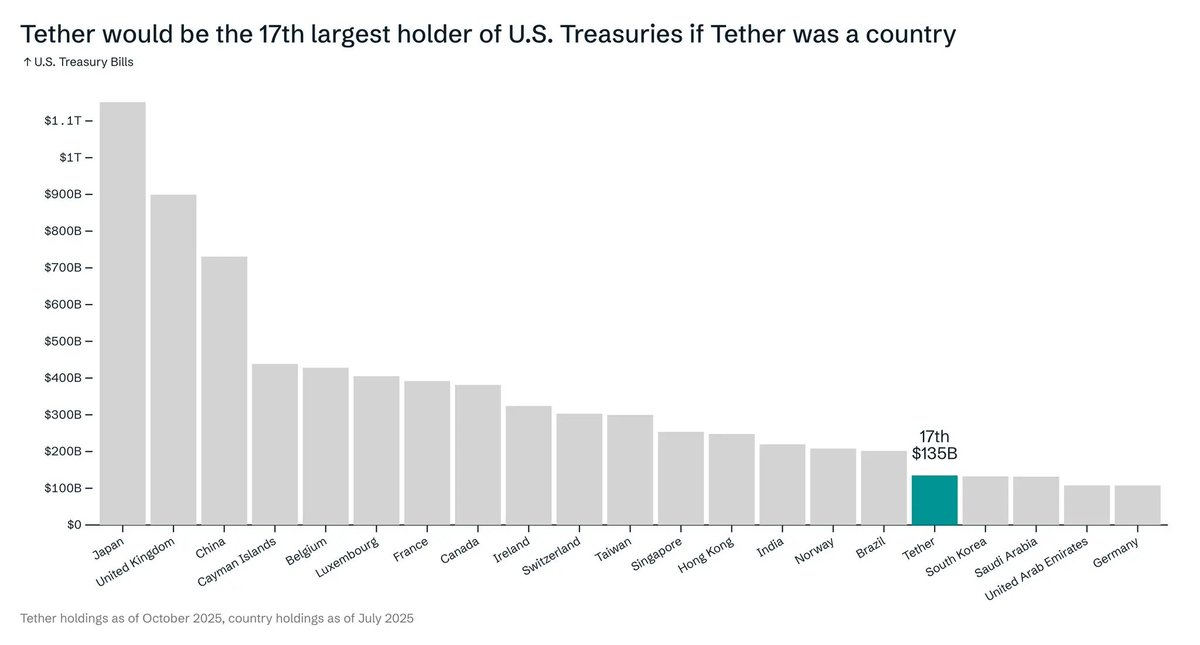
Source: Tether
Tether holds $135 billion in U.S. Treasury bonds, a massive sum that ranks it 17th globally, surpassing South Korea. In fact, Tether has built a digital empire through its currency, USDT.
Tether's recent investment strategy reveals its approach to building a digital empire:
- Building Trust : Tether is committed to winning users' trust through its two core assets—Bitcoin and gold.
- Global Expansion : Tether aims to cover all continents, including Asia, Africa, South America, Europe, the Middle East, and the U.S. market, which it recently entered through USAT.
- Enhanced usability : Tether aims to enable retail users, businesses, and institutions to easily use USDT in their daily lives and financial activities through a variety of services.
Some predicted that Tether and USDT's position would weaken as the blockchain industry became more regulated, but this prediction proved wrong. I have no doubt that the US-centric stablecoin industry will continue to grow, and I firmly believe that the influence of Tether and USDT will accelerate further.
Ultimately, we are standing on the edge of a USDT-based digital empire—an empire too big to fail.
- 核心观点:USDT正构建庞大数字金融帝国。
- 关键要素:
- 通过比特币和黄金建立信任基础。
- 全球战略布局覆盖新兴与欧洲市场。
- 投资钱包和支付设施提升可访问性。
- 市场影响:巩固USDT主导地位,加速数字美元化。
- 时效性标注:长期影响


